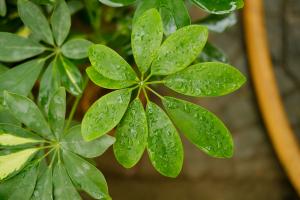How to Take Care of a Croton Plant
Introduction
Croton plants, also known as Codiaeum variegatum, are popular for their vibrant and colorful foliage. These plants are native to Southeast Asia and the Pacific Islands, but they can also thrive in many other areas around the world. Croton plants are a great addition to any indoor or outdoor garden, but they can be a bit finicky when it comes to their care. In this article, we'll provide some tips on how to take care of a croton plant and keep it looking its best.
Light
Croton plants require bright and indirect sunlight to thrive. They should be placed near a window that receives plenty of natural light, but not in direct sunlight as it can scorch the leaves. If your croton plant is not receiving enough light, its leaves will start to turn yellow and fall off. To ensure optimal growth and health, consider using artificial lighting to supplement the sunlight, especially during the winter months.
Water
Proper watering is critical to the health of a croton plant. These plants prefer well-draining soil that is kept moist, but not waterlogged. Overwatering can lead to root rot, which can be fatal to the plant. To prevent this, allow the soil to dry out slightly before watering again. During the hot summer months, your croton plant may require more frequent watering, but be careful not to overdo it.
Temperature and Humidity
Croton plants prefer warm temperatures and high humidity levels. They thrive in temperatures between 60-85掳F (15-29掳C). If the temperature drops below 60掳F (15掳C), the plant may suffer and become dormant. Placing a croton plant near a humidifier or in a bathroom with a shower can help to increase the humidity levels. You can also mist the leaves periodically to provide additional moisture.
Fertilizer
Croton plants require regular fertilization to maintain their vibrant foliage. Use a balanced, water-soluble fertilizer every two to four weeks during the growing season. Reduce the frequency of fertilization during the winter months when growth slows. Be sure to follow the instructions on the fertilizer label, as too much fertilizer can be harmful to the plant.
Pests and Diseases
Croton plants are susceptible to mealybugs, spider mites, and scale insects. Regularly inspect your plant for signs of these pests and treat them promptly with an organic insecticide. Croton plants can also suffer from leaf spot, which is a fungal disease that causes yellow or brown spots on the leaves. To prevent this, avoid getting water on the leaves and ensure proper air circulation around the plant.
Conclusion
Taking care of a croton plant requires some attention to detail, but the results are well worth it. By providing your croton plant with the right amount of light, water, temperature, humidity, and fertilizer, you can enjoy its vibrant and colorful foliage year-round. With proper care, your croton plant can thrive and become a beautiful addition to your home or garden.

 how many times do yo...
how many times do yo... how many planted tre...
how many planted tre... how many pine trees ...
how many pine trees ... how many pecan trees...
how many pecan trees... how many plants comp...
how many plants comp... how many plants can ...
how many plants can ... how many plants and ...
how many plants and ... how many pepper plan...
how many pepper plan...





























